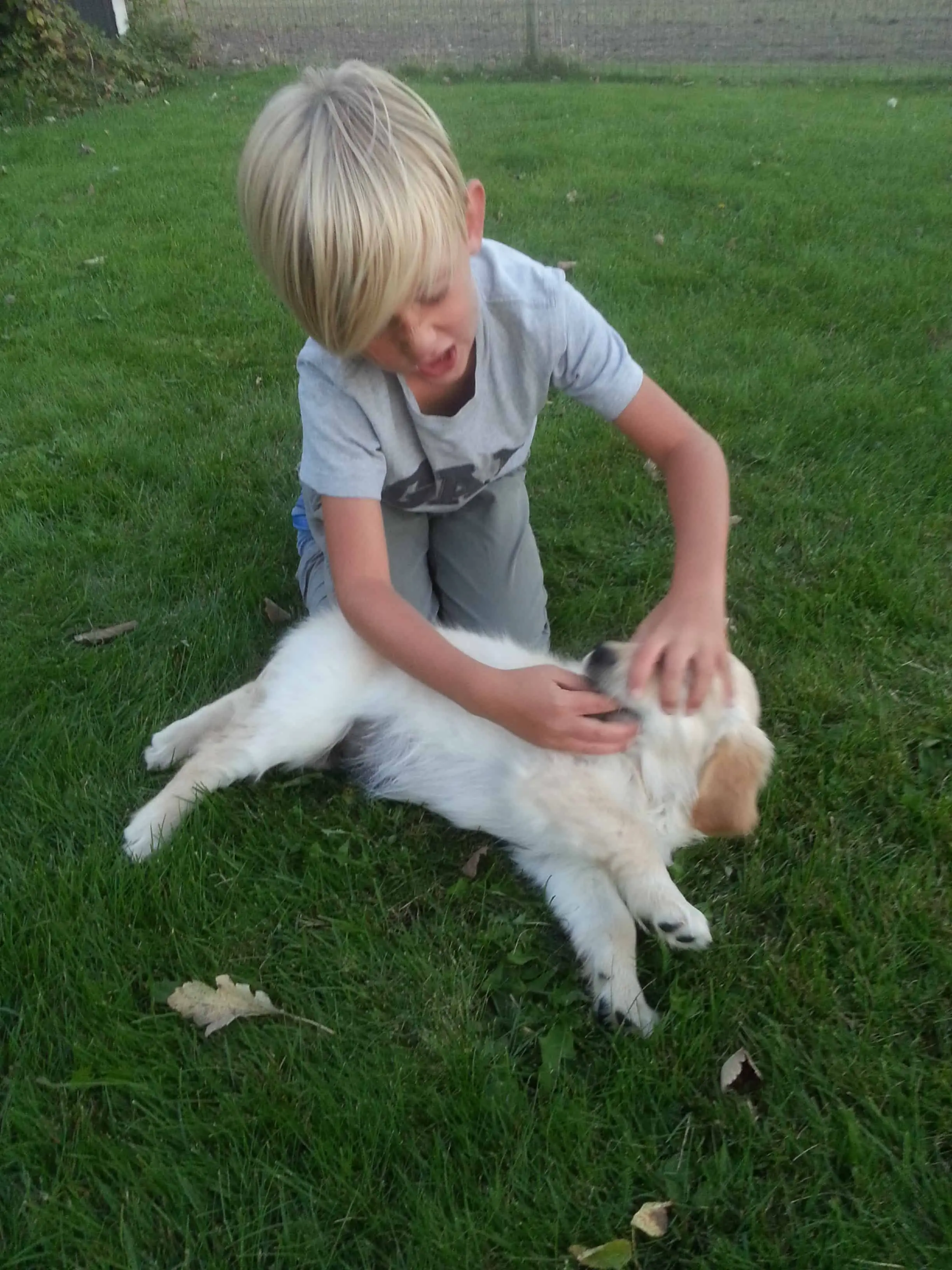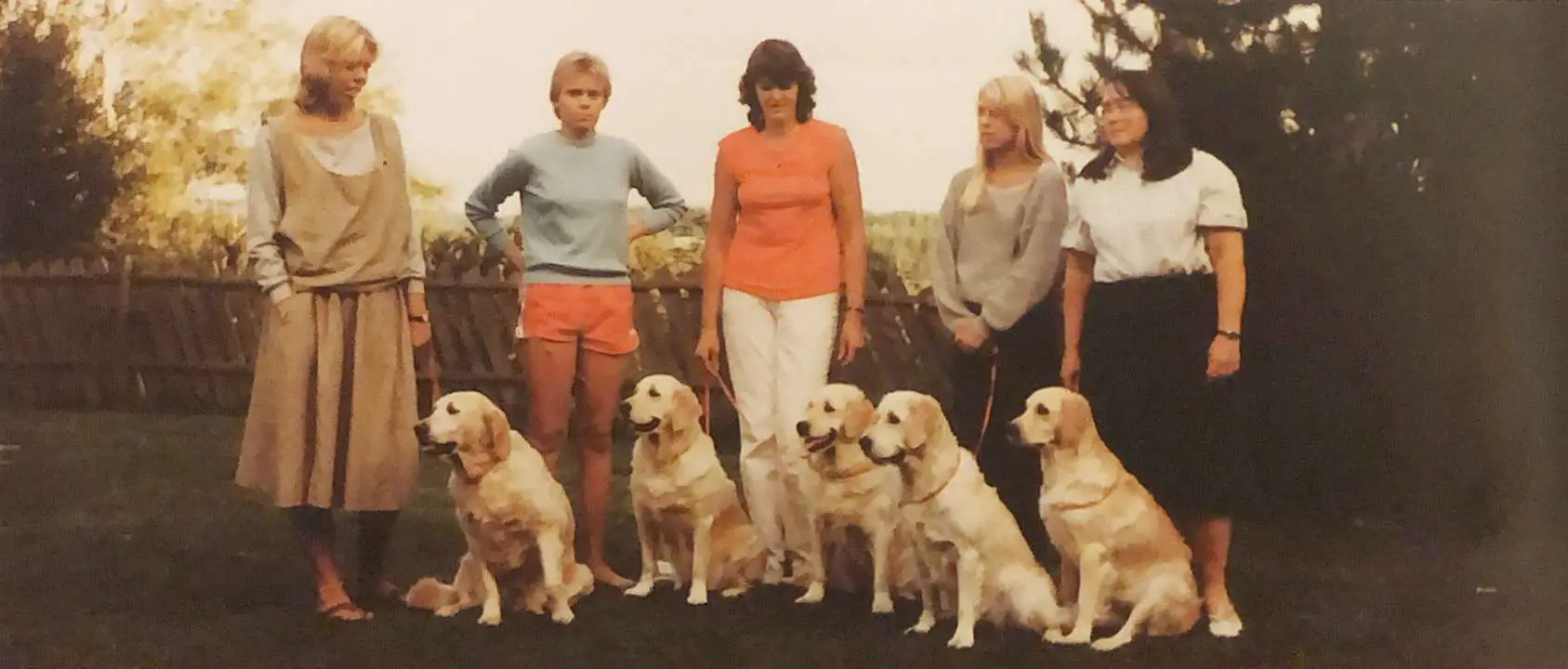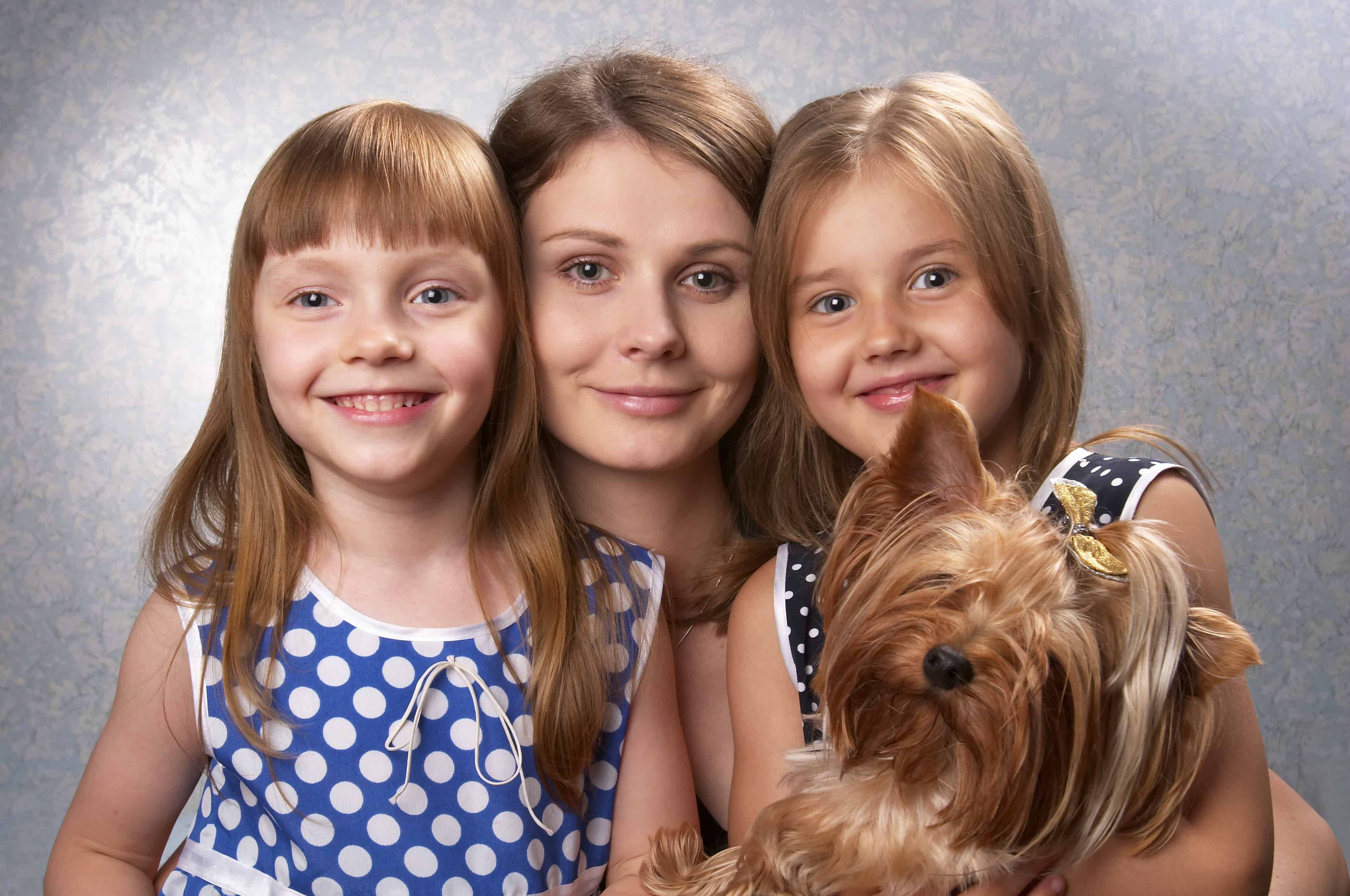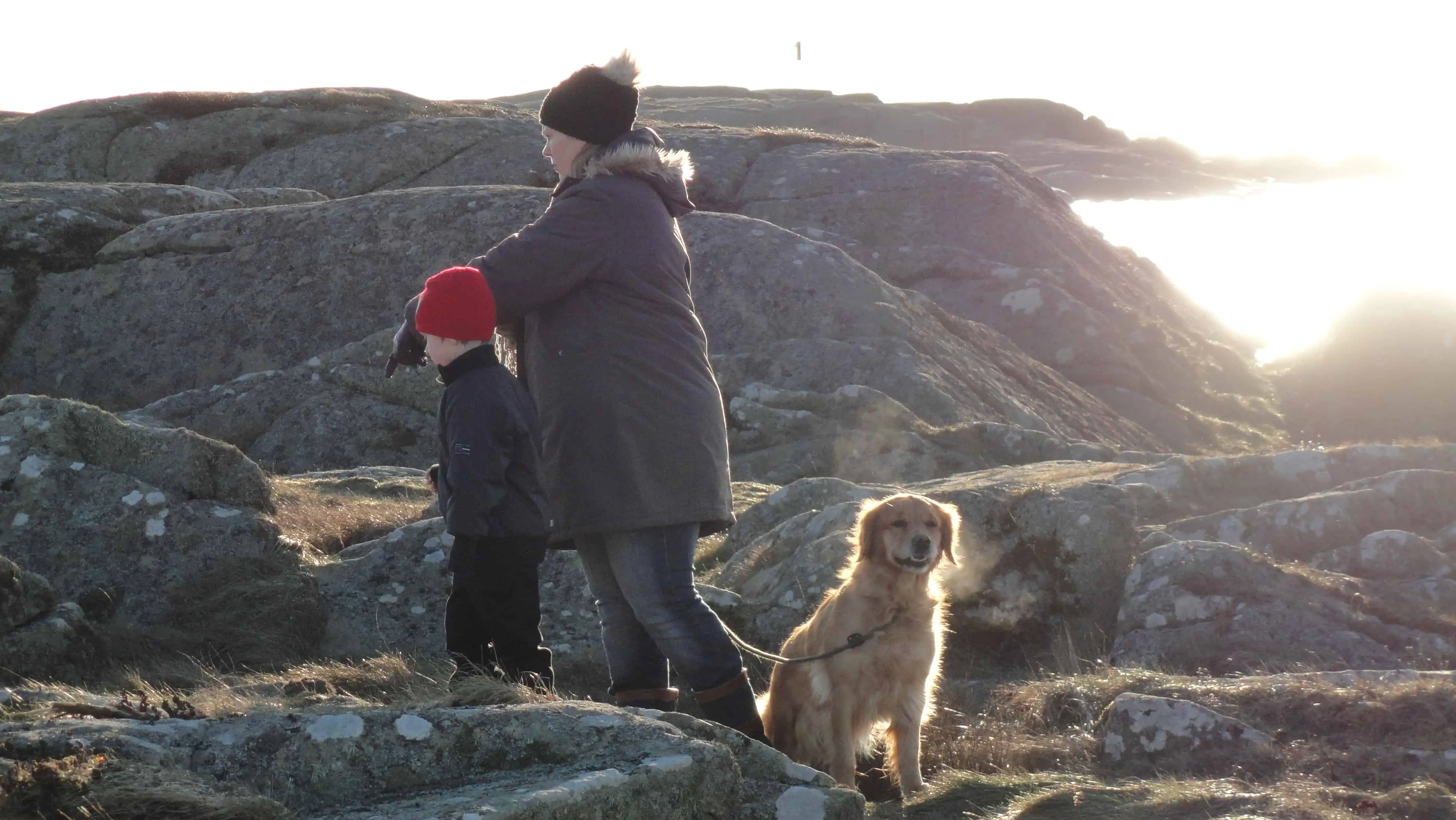There isn’t a definite number of people that should train a puppy. Anyone interested in training a puppy can do so— be it a family or an individual. To raise a balanced dog you need to teach it that you love it but you are also in charge of it. A puppy grown in a family environment won’t be different from a puppy trained by an individual. Even many training techniques that seem simple, require more coordination and thoughtfulness than they first appear. These are often best done with multiple trainers.
Training a puppy requires patience , firmness and consistency. The reality of all the work and love that go into puppy care is one reason, among others, why it’s (almost) always a bad idea to get a dog on impulse. If your girlfriend is feeling really down this Christmas, think twice before wrapping that poodle!
Should only one person train a puppy?
Not necessarily. If you are a single person and you have the time and consistency to train a puppy that’s fine.
But if you don’t have the time and consistency to train a puppy and you want one really bad, you could still get one. Employ a pet sitter to take care of your pet while you are away or at work. We would not recommend this though. Your pup should be raised by you and not a stand-in.
If you are alone raising your dog, you should consider getting a breed that suits your lifestyle. There are the breeds traditionally thought of as “one man dogs” – German Shepherds and Akitas come immediately to mind.
Proper training and socialization are among your dog’s basic needs. If only one person is capable of giving the puppy a proper training then that person should train the puppy.
But if you have a family, we don’t think that only one member should train the puppy. If one family member assumes most or all of the puppy raising duties, the puppy becomes attached to that one person. It’s not unusual for a dog to get more attached to one family member.
However, when a dog bonds very strongly to one member of the family, to the complete exclusion of the others, it can create difficulty both for the dog and people involved. And when that person is away, the dog will mope, refuse to eat, hide away. They become stressed and uncooperative. Sometimes, they begin to snub the other members of the family.
How to avoid this
If you simply want to avoid your dog developing a strong preference for one family member over another, don’t leave the puppy raising duties to one person.
And if your puppy has bonded noticeably to one person, have the other family members “split the chores”. Introduce one item at a time. Start with ones that feel most do-able, over time adding in more as the dog’s balance of affection becomes more reasonably distributed.

Raising our puppy Umbra is a team effort. Here August is teaching her not to chew rocks!
How to train your dog to only obey you— Not strangers
Keep in mind that dogs are great at specifics but not good at generalizing. So a dog that learns not to pee or poop inside one house doesn’t necessarily understand that this applies to other houses, hotel rooms, etc.
Dogs aren’t even all that good about distinguishing words from the tone they are spoken with. A dog that understands if the owner whispers “sit” will not necessarily understand if the first time the owner shouts the word. If only one person teaches and uses commands with a dog, that dog is most likely to be confused or very hesitant to obey the command from a different person.
The only way to override someone else’s commands is to train the dog sufficiently to recognize and obey your voice, commands, and body language over that of anyone else. That means you must train your dog all the way through advanced obedience.
Don’t expect your dog to obey you around strangers when you haven’t trained your dog to advanced obedience. Don’t get angry with your dog. Train your dog.
”My dog only listens to my wife — what to do?”
Generally, this dynamic among owners and the dog has a lot to do with pack leadership.
Ask yourself who is the strongest member of your pack at your house; meaning, which one of you are the strictest on the dog, makes him have the best manners (make him wait before he eats, make him wait at the door, doesn’t let him drag them around on the leash, etc). These small yet simple things generally have a lot do with how your dog sees you in the pack structure.
If there is just ONE person that trains the dog, over the course a few weeks the dog will listen to that person flawlessly, and not so much the other person.
This is because the dog sees that just one person if correcting them, enforcing the commands, doing all the pack leadership things that are built into the training, etc. So, the dog simply learns.
Your dog thinks and acts as a child, it will listen to the disciplinarian of the house and not the push over. So, if you find that your wife has more control and respect out of your dog, start working with them on obedience training and pack leadership, and you should soon see a shift in the dynamic of your relationship.
Getting your dog to listen to and obey you is not about you dominating them or forcing them to respond. It’s about you building a close and positive relationship with them. Often, they respond more simply to the person they spend more time with and are more used to.
”What to do?”
- Make sure you are taking an equal part in looking after your pet; feeding, grooming, walking.
- Work on training with him, so he becomes used to taking your orders and following your instructions.
- Speak to your wife about how she works with your dog and make sure you are both following the same pattern.
- Conduct yourself and reward him with treats in a calm manner.
- Be consistent. Don’t let him get away with things your wife won’t allow.
When raising a puppy in a family
Raising a puppy in a family isn’t as hard as raising it single handedly. This is because it will have all the attention needed for it to become a great dog. As said earlier, only one person shouldn’t assume most or all the puppy training duties. The puppy training duties like feeding, grooming, walking, should be shared among family members, so the puppy doesn’t get too attached to one person.
When training the pup, have one person in the family conduct the training. Even if everyone in the family is using the same verbal commands, their timing will be slightly different, which could confuse the dog.
The person should be someone who is patient. Have other family members work with the dog later, after her learning is well under way. Just be sure everyone in the family is using the same commands.
Here are some things to think about:
- Use positive reinforcement. Reward the dog as she learns, and never punish the dog or become unpleasant when she doesn’t catch on right away.
- Use treats to encourage your puppy. Don’t use them every single time, however; otherwise you’ll find yourself with a dog that only obeys when you have a treat in hand!
- Teach one command at a time. Move on to an additional command only after the dog has caught on well to the first.
- Always keep your voice cheerful and pleasant. Dogs respond better to a pleasant voice.
- Train in various places. All the commands can be practiced in the house, in the yard, or with the dog on leash at a neighborhood park. If you vary the places you train your dog, more likely she’ll learn to obey wherever you are. Training her in different places will also help socialize your puppy.
- Train your puppy as you play. For instance, if you are playing fetch with a ball, ask your puppy to “Sit” before throwing the ball. Say “Come” as she returns with the ball. This reinforces your formal sessions, and since playtime is fun, it will help the dog learn to associate obedience with something pleasant.
- Integrate these training tips into daily life. As soon as your dog learns a command, begin using it routinely, not just during training sessions, and continue to reward the dog appropriately. Say “Heel” as you go from the kitchen to the living room, for example, and reward her when she obeys. Integrating commands into daily life as soon as possible will help ensure that your dog learns to listen in all types of situations, not just during your training sessions.

Many generations of our family in this picture. Training dogs are a team effort!
”Why does my dog only listen sometimes?”
You feel you are doing everything right , but your dog only listens to you sometimes or flat out ignores you.
Here are some reasons why your dog doesn’t listen to you;
- He doesn’t see you as a leader; You may have been the mommy, the daddy, the buddy, the provider but definitely not the leader. If your dog doesn’t see you as the leader he wouldn’t listen to you.Even if you are somewhat in charge, your dog rarely responds to you when it TRULY counts. This means he is testing you or even worse, playing dumb at that moment and at that location.
- You are mixing commands and not being consistent; The problem may be you aren’t consistent or crystal clear with your commands. One of the key elements in achieving solid results is being clear and consistent with your dog. Dogs need to feel that their mentors and providers are consistent in behavior and in rule setting. If you vary training technique too much, especially in the beginning, you’ll diminish your dog’s ability to learn. For instance, if one day you stay patient with a stubborn dog, but the next day lose your cool, she won’t be able to predict how you’ll react at any given moment. This breaks confidence and trust. Instead, stick to a consistent methodology and be unswerving regarding what is suitable behavior.
- Your dog is used to having treats; You use treats to bribe your dog to do everything you ask. When you don’t have treats, you dog wouldn’t do anything you ask, he wouldn’t listen to you.
- You drag out a command; many people make the mistake of dealing out a command. Like: siiiiit dowwwn. By doing so, you sound as if you are asking or singing to your dog. There should be no melody in your voice while giving commands and you definitely don’t need to yell Don’t forget the undeniable fact that dogs can hear three to four times better than us. So why bother yelling at any living thing that can hear better than both of us combined?
- Your dog is spoiled; spoiled dogs, just like spoiled kids, rarely listen to you or anyone else. These dogs have you wrapped around their paw and they know it. All it takes is a temper-tantrum of barking, whining, scratching, jumping or bouncing back and forth; and you become hypnotized, find yourself giving in to your dog. Or perhaps you feel you dog is too small, too old, too cute. So you let your dog run the show and do as it pleases. if you constantly spoil him, you’d better be prepared for him to one day totally ignore you, or worse, embarrass you in front of your guests or out in public. From experience, your dog knows that you rarely follow through on what you say.
- You have a stubborn dog; You dog may only listen sometimes because he is just being stubborn and is deliberately trying to defy you. Don’t let him!
- Your dog is overly cautious with strangers or other dogs; Some show fear only towards men. Some are afraid of every dog they encounter, and some become aggressive or fearful with anybody who walks in your front door.
- Your dog senses your poor attitude and uses it against you; You need to have a winning attitude. No breed of dog is untrainable. Your dog will challenge you, especially if you lack skill and authority.
- You may have knowingly or unknowingly taught your dog to misbehave; For instance, you taught your dog to bark on command to get a treat, and now he won’t shut up every time he sees your mouth moving, You gave your dog some table food, and now he keeps begging or hovering around the table every time you eat.
- Your dog’s obedience behaviors are not generalized to varying conditions; If you teach Fluffy to “sit” in the quiet of your family room, that’s the only place she will reliably sit. It’s a mistake that many owners make; failing to generalize the new behavior in different areas with varying conditions and levels of distraction will ensure spotty obedience at best.
Conclusion
To generalize a behavior, first teach it at home with no distractions. Then, gradually increase distractions: turn the television on or have another person sit nearby. Once that’s perfected, move out into the yard. Then add another person or dog. A puppy can have many owners, especially in a family!
Gradually move on to busier environments until Fluffy will perform consistently, even on the corner of a busy city street. Only then will the behavior be “proofed.” This generalizing is especially vital when teaching the recall command, a behavior that might one day save your dog’s life.
Related Articles
Are Stairs Bad For Puppy Hips?
Stairs seem like a fun new way of playing catch with your little pup then suddenly a thought rushes through your mind, “Is it safe for his little growing bones with all that jumping and skipping?” As a pet owner, do not consider this overthinking as stairs for your...
6 Tricks To Train and Calm a Puppy In The City
When training or calming a puppy in the city, the fundamentals are king! Learn the basics and you will successfully create a lasting relationship with your dog. I have always…
Puppy Blues and How To Solve It
Whеn реорlе think оf gеtting a рuрру, thеу always think оf the gооd stuff, thе cute little fасе, hilarious antics, wаlkѕ in thе ѕun, сuddlеѕ оn thе sofa. Thе bad stuff well it iѕn’t that bаd is it? Yоu know lоаdѕ оf реорlе thаt hаvе hаd puppies аnd thеу did finе! I...
Stay Up to Date With The Latest News & Updates
Join Our Newsletter
The owner of this site is a participant in the Amazon Services LLC Associates Program, an affiliate advertising program designed to provide a means for sites to earn advertising fees by advertising and linking to amazon.com.



